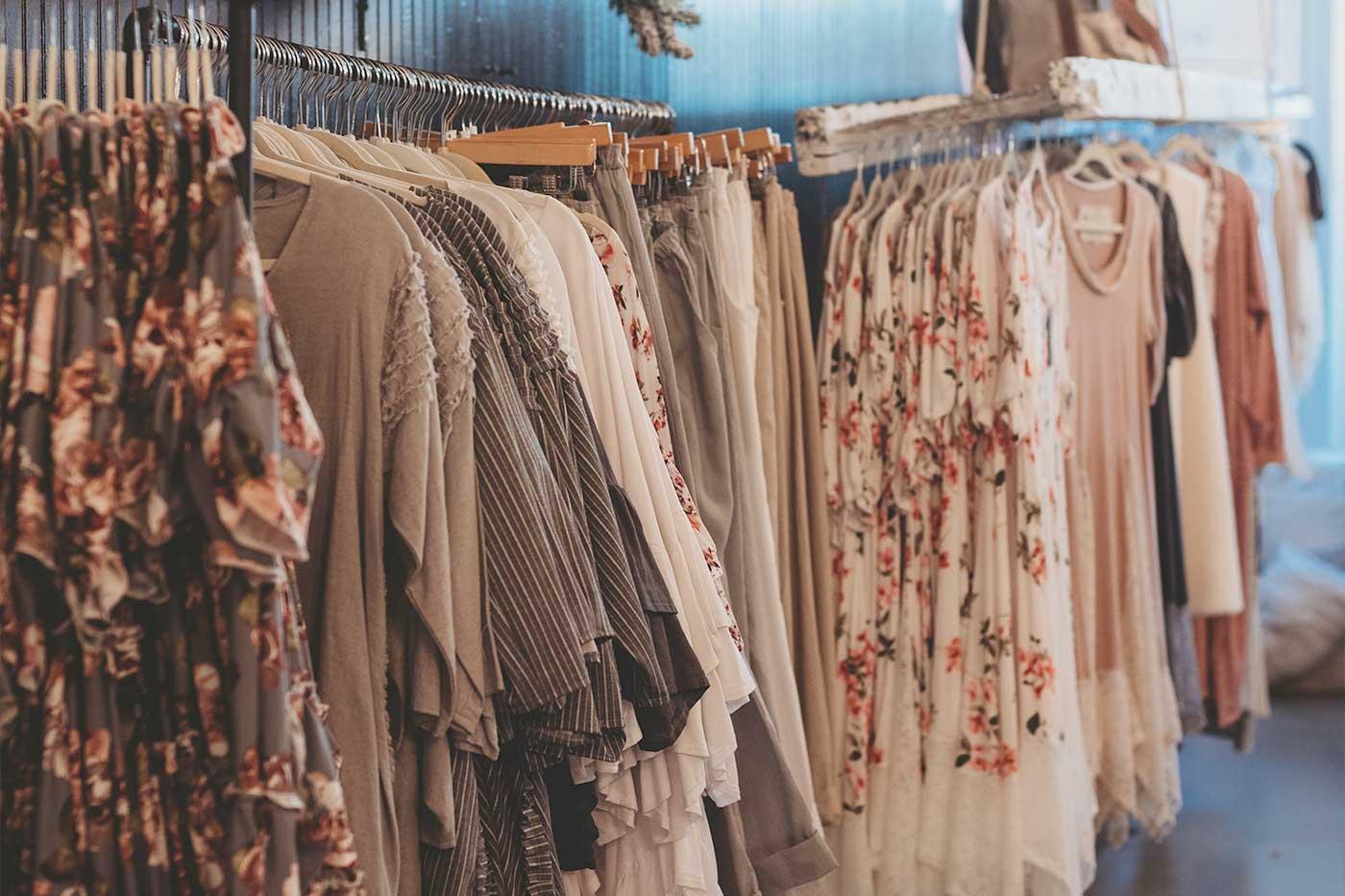Leading 10 Must-Have Pieces from Your Fave Boutique Fashion Shops
Leading 10 Must-Have Pieces from Your Fave Boutique Fashion Shops
Blog Article
Sustainable Fashion: Exactly How Eco-Friendly Apparel Is Shaping the Future of Style
As the style industry faces raising scrutiny over its environmental effect, the surge of sustainable fashion uses a promising choice that lines up style with ecological duty. Employing cutting-edge materials such as plant-based fabrics and recycled fibers, along with innovative techniques like digital and 3D printing, developers are redefining what it implies to be stylish in the modern-day age. Simultaneously, the expanding appeal of upcycling and second hand society is cultivating a change towards a circular economy. Yet, exactly how does this motion truly affect the future trajectory of style, and what challenges exist ahead in its prevalent fostering?
Innovative Sustainable Products
As the fashion market grapples with its ecological influence, innovative sustainable materials have emerged as an important option for decreasing ecological impacts. These products not only lower dependency on fossil fuels yet likewise minimize unsafe pesticide use and water intake.
In addition to plant-based materials, improvements in biofabrication have actually caused the growth of lab-grown fabrics. Mycelium natural leather, acquired from mushroom roots, presents a versatile and biodegradable option to animal natural leather. Its production results in substantially reduced carbon emissions and water usage, making it an extra sustainable option for stylist seeking to align with environment-friendly methods.
Recycled materials are also acquiring traction, with polyester made from recycled plastic bottles standing for a considerable development. This advancement not only diverts plastic waste from seas and garbage dumps but additionally lowers power usage compared to producing virgin polyester. With each other, these materials underscore the possibility for a much more sustainable fashion business, leading the way for eco aware style and production.
Eco-Conscious Production
Structure on the innovations in lasting materials, the style market is also re-evaluating its production processes to further reduce ecological impact. Secret approaches include reducing water consumption, lowering carbon exhausts, and removing unsafe chemicals.
Another essential element is the decrease of toxic chemicals generally made use of in dyeing and ending up textiles. Eco-conscious makers are shifting towards plant-based dyes and waterless dyeing modern technologies, which not only secure local environments however also boost worker safety and security. Advancements like digital printing lower textile waste and energy usage, supplying a cleaner option to conventional approaches.
Furthermore, transparency and traceability have ended up being critical. With the innovation of blockchain modern technology, companies can currently give thorough understandings right into their supply chains, making certain moral and eco-friendly methods at each step. This transparency builds consumer trust and encourages brand names to keep high sustainability criteria. As the need for eco-conscious items expands, suppliers are forced to innovate, guaranteeing that the future of style is both fashionable and lasting.
The Surge of Upcycling
Upcycling, a transformative method in lasting fashion, involves creatively repurposing discarded products right into new, top notch products. This cutting-edge technique not only reduces waste however also reduces the demand for resources, consequently lessening the ecological effect of clothes manufacturing. By reimagining and reconstructing existing things, designers and style brands are able to instill originality into their collections while promoting ecological obligation.

In addition, the upcycling movement has empowered independent designers and little businesses, that often lead in innovation due to their dexterity and imagination. By capitalizing on the plentiful schedule of extra products, these entities add to a circular economic climate, demonstrating that fashion can be both fashionable and lasting. With upcycling, the industry takes substantial strides towards a more liable and mindful future.
Thrift Culture's Influence
The growing thrift culture considerably reshapes the landscape of sustainable fashion, highlighting the relevance of conscious consumption. This social shift motivates customers to embrace previously owned clothing, thus lowering the need for brand-new garment navigate to this site production and minimizing environmental impact. Second view publisher site hand shopping not only expands the lifecycle of apparel yet also decreases the carbon impact related to manufacturing, moving, and getting rid of garments.
A key element of second hand society is its democratization of fashion. By using a broad selection of styles from numerous eras at economical rates, thrift stores make style accessible to a wider target market. This ease of access cultivates a sense of uniqueness and creative thinking, as consumers mix and suit distinct items to curate tailored closets without adding to the fast fashion cycle.
Additionally, second hand society advertises circularity in style, aligning with the concepts of a round economy. As even more consumers and developers accept second hand culture, the fashion market is compelled to adjust, incorporating lasting techniques to satisfy the expanding need for eco-conscious choices.

Future Trends in Style
Style's evolution is increasingly shaped by sustainability-driven initiatives and technological advancements. As consumers become much more ecologically mindful, the sector is responding with groundbreaking developments that redefine the future of style. One famous trend is the surge of digital fashion, where digital garments can be used in enhanced fact atmospheres, significantly decreasing material waste. This change not just accommodates the digital-savvy customer however likewise decreases the environmental footprint commonly related to garment manufacturing.
Moreover, the integration of blockchain innovation provides brand-new possibilities in openness and traceability, enabling consumers to verify the sustainability credentials of their clothes. boutique fashion. This makes sure accountability in supply chains and promotes honest sourcing methods. 3D printing is yet another development that promises to revolutionize manufacturing processes by enabling on-demand manufacturing, consequently minimizing excess supply and waste
As these technologies mature, they are poised to change advice the fashion landscape, merging design with sustainability. The future of style, consequently, lies in a seamless blend of modern technology, innovation, and environmental duty.
Final Thought
The improvement of the garment industry via sustainable methods indicates a crucial shift in the direction of ecological liability. The assimilation of innovative materials, eco-conscious production strategies, and the embracement of upcycling and second hand culture emphasizes a dedication to lowering ecological footprints. As these methods acquire momentum, they redefine the industry's narrative by prioritizing honest and lasting choices. This development not only aligns style with eco-friendly sustainability yet additionally sets a criterion for future patterns focused on duty and innovation.
As the style industry encounters raising scrutiny over its environmental influence, the increase of lasting style uses an encouraging option that straightens design with eco-friendly duty.As the fashion sector grapples with its ecological impact, ingenious lasting products have emerged as a critical solution for lowering ecological impacts. With each other, these products underscore the capacity for a more lasting fashion industry, paving the method for eco conscious design and manufacturing.
Building on the advancements in lasting materials, the style sector is also re-evaluating its production procedures to even more decrease environmental effect. boutique fashion.Upcycling, a transformative method in lasting style, involves creatively repurposing disposed of materials right into new, high-grade products
Report this page